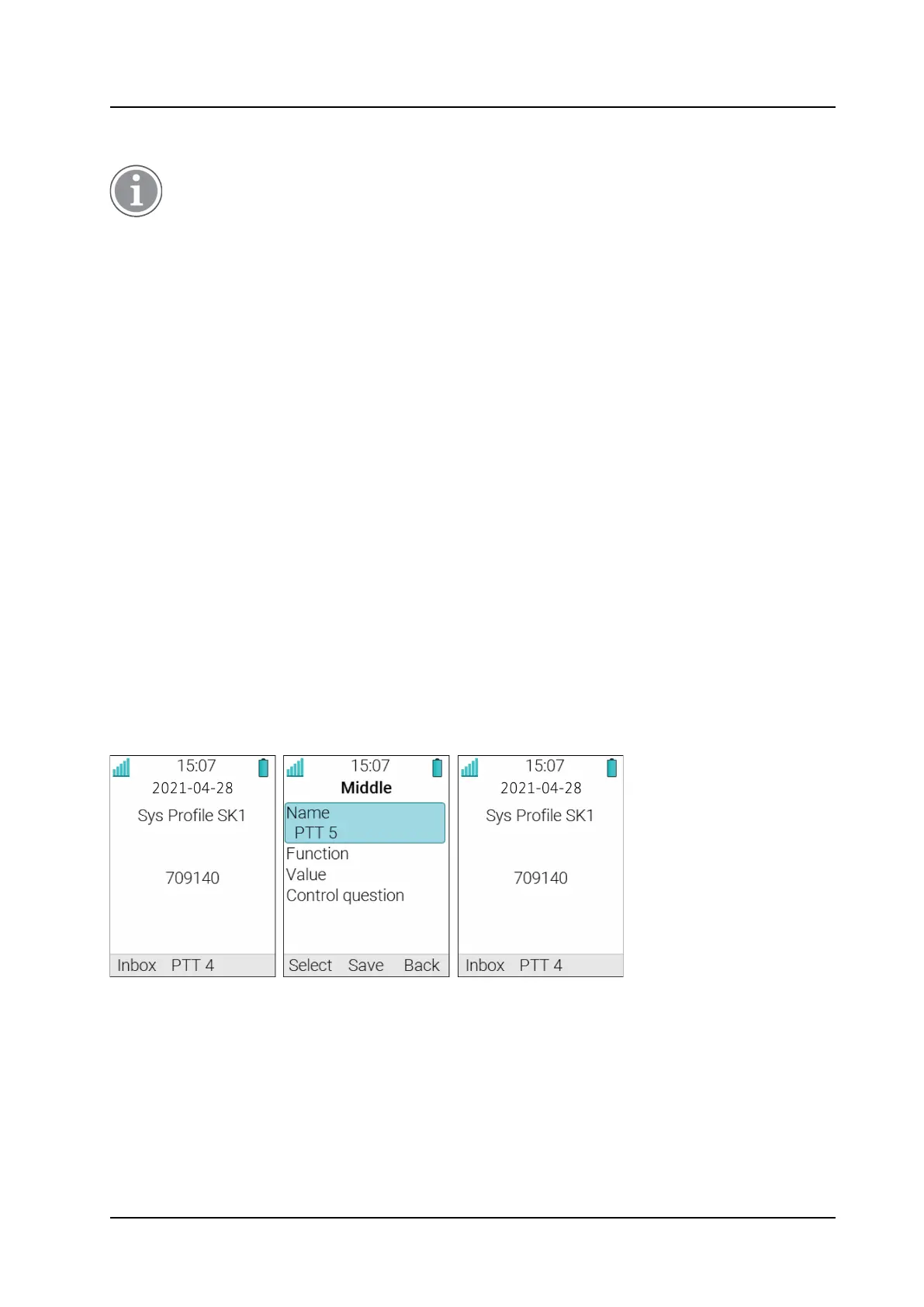System Profiles
USER MANUAL
Ascom d83 DECT Handset
10 System Profiles
The support for this feature is dependent on handset model. For more information, see 1.2
Functions and Accessories, page 1.
A system profile can be used when certain settings in a handset are required that the user is not allowed to
change. The settings require configuration in the WinPDM or Device Manager and include alarm settings,
soft key settings and presence settings. For additional information, refer to the Configuration Manual,
Ascom d83 DECT Handset, TD 93426EN. When the system profile is activated, its settings is not displayed
in the handset’s menu. It can be shown that a system profile is active in the handset by showing its profile
name in idle mode.
The system profile can be used in combination with the user profile (see 8.6 Profiles, page 65). If there is
conflict between the settings in the system profile and the settings in the user profile, the settings in the
system profile is used.
If a user changes a setting in the handset menu that is determined by a system profile, the menu is updated
but the setting is not changed.
For example, in the left-hand view of Figure 12. System profile overrides settings changed by the user, page
78, a system profile has been activated and is indicated by the system profile name “Sys Profile SK1” shown
in the handset in idle mode. In this case, the soft key "Inbox" and middle soft key "PTT 4" are determined by
the system profile settings. If a user, for example, attempts to change the middle soft key name to “PTT 5”,
by using the handset menu Shortcuts > Soft keys > Middle (middle view in figure), the soft key shows “PTT
5” and the setting can be saved. However, the system profile settings are not overridden. When the
handset returns to idle mode, the system profile settings are redisplayed, showing “PTT 4” instead of the
user changed “PTT 5” (right-hand view in figure).
Tip: If this system profile is to be permanently activated, it is recommended to hide the Soft keys menu in
the handset.
Figure 12. System profile overrides settings changed by the user
10.1 System Profile Status Indications
The administrator may configure the handset to play a sound if the system profile is activated or deactivated.
This provides the user with an audible alert when the system profile changes from inactive to active or vice
versa.
The feature can be triggered by several kinds of event, such as moving between different parts of a
buildings where a system profile might be appropriate in one location but not required in another. The
system profile name is displayed when the handset is in idle mode.
78 TD 93434EN / 01 December 2021 / Ver. B
